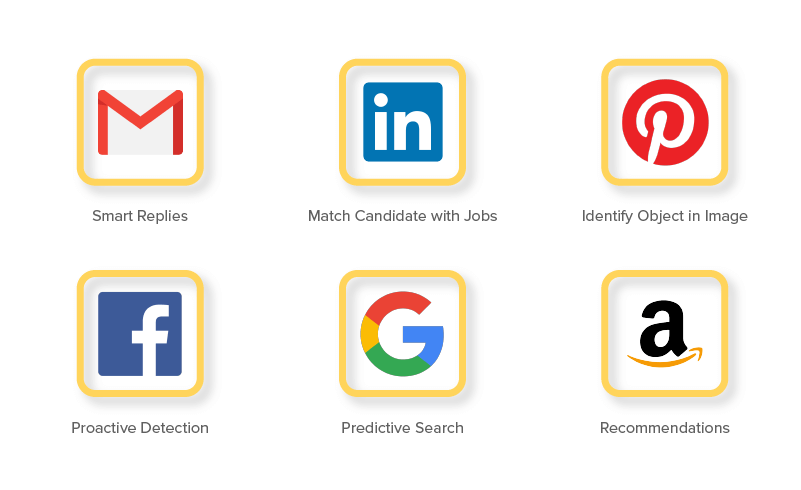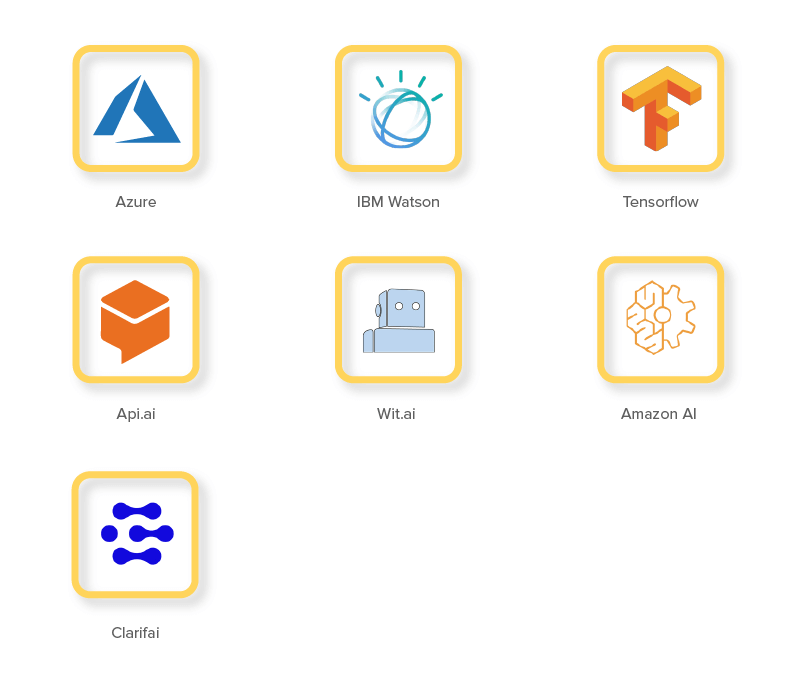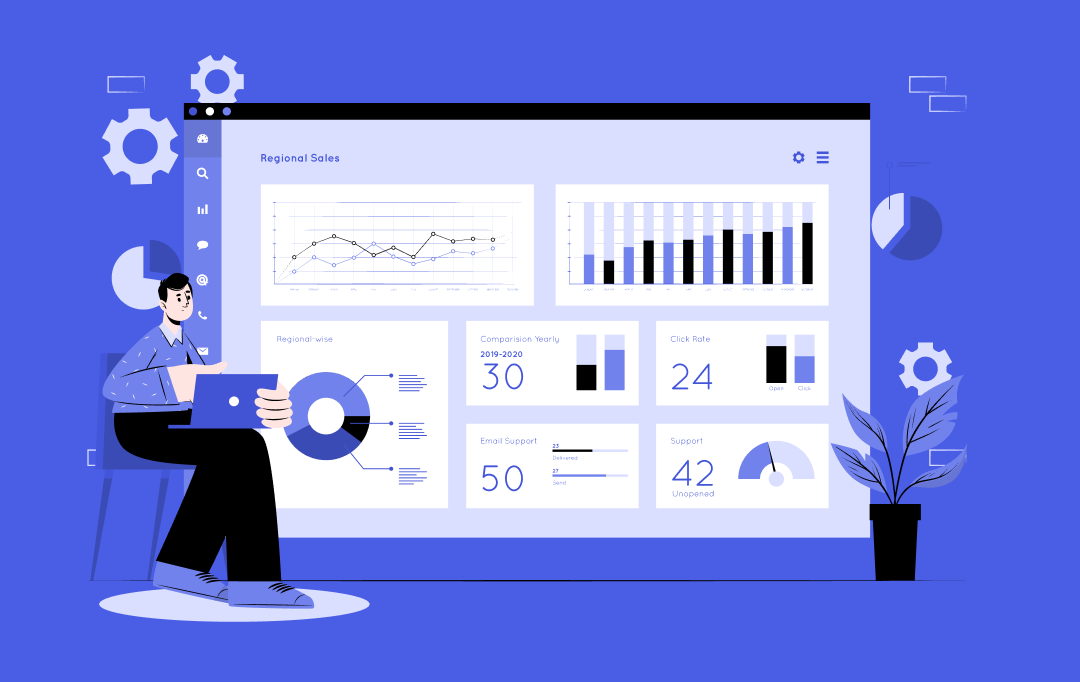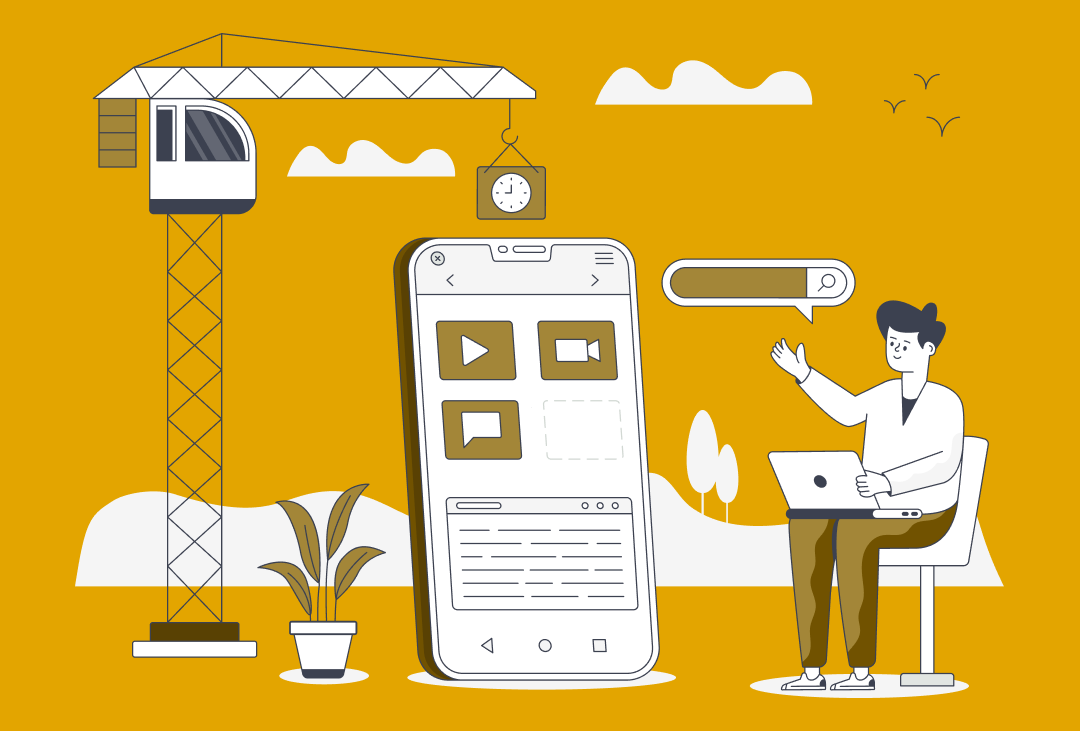When we talk about the present, we don’t realize that we are actually talking about yesterday’s future. And one such futuristic technologies to talk about is how to integrate machine learning and artificial intelligence into apps. Your next seven minutes will be spent on learning how AI and Machine Learning technology is disrupting today’s mobile app development industry and what can you do to take advantage of it.
“Signature-based malware detection is dead. Machine learning based Artificial Intelligence is the most potent defense the next-gen adversary and the mutating hash.”
― James Scott, Senior Fellow, Institute for Critical Infrastructure Technology
The time of generic services and simpler technologies is long gone and today we’re living in a highly machine-driven world. Machines which are capable of learning our behaviors and making our daily lives easier than we ever imagined possible, all the way, making it necessary for us to understand the process of integrating Machine Learning and Artificial Intelligence into apps.
Technological realm today is fast-paced enough to quickly switch between Brands and Apps and technologies if one happens to not justify their needs in the first five minutes of them using it. This is also a reflection upon the competition this fast pace has led to. Mobile app development companies simply cannot afford to be left behind in the race of forever evolving technologies.
Today, if we see, there is Artificial Intelligence and Machine Learning incorporated in almost every mobile application we choose to use. Which makes it all the more important to know How to integrate machine learning and artificial intelligence into apps.
For instance, our food delivery app will show us the restaurants which deliver the kind of food we like to order, our on-demand taxi applications show us the real-time location of our rides, time management applications tell us what is the most suitable time for to complete a task and how to prioritize our work.
In fact, Artificial Intelligence and Machine Learning that were once considered top complicated technology to work on or even comprehend is something that has become an everyday part of our lives without even use realizing of its presence.

The wide inclusion of the two related technologies has made the need for worrying over simple, even complicated things cease to exist because our mobile applications and our smartphone devices are doing that for us.
Looking at the stats, they will show us that
- AI and Machine Learning-driven apps is a leading category among funded startups
- Number of businesses investing in ML is expected to double over the next three years
- 40% of US companies use ML to improve sales and marketing
- 76% of US companies have exceeded their sales targets because of ML
- European banks have increased product sales by 10% and lower churn rates by 20% with ML
The idea behind any kind of business is to make profits and that can only be done when they gain new users and retain their old users. The difficult task can be made easy through AI as it comes as one of the benefit or advantage of integrating machine learning and artificial intelligence in app.
There are three primal ways through which the power of Artificial Intelligence and Machine Learning can be incorporated in mobile apps to make the application more efficient, sound, and intelligent. The ways which are also the answer to How to integrate machine learning and artificial intelligence into apps.
Reasoning
This part of Artificial Intelligence deals in getting the computers to apply reasoning for solving problems. This facility is what makes AI beat a human at chess and how Uber makes use of automated reasoning for optimizing routes to get the users to reach their destination faster.
Recommendation
This is one of the most commonly seen use cases of AI and Machine Learning in the mobile app industry. Giving the users insight into what they would require next has turned out to be the secret of success of some of the top brands in the world – Amazon, Flipkart, Netflix, amongst others have been using the Artificial Intelligence backed power for a very long time now.
Behavioral
Learning how the user behaves in the app can help Artificial Intelligence set a new border in the world of security. Every time someone tries to take your data and try to impersonate any online transaction without your knowledge, the AI system can track the uncommon behavior and stop the transaction there and then.
These three primal bases that answers what are the best ways to incorporate machine learning and AI in your app can be used in multiple capacities to enable your app to offer a lot better customer experience.
And now that we have looked at how to integrate machine learning and artificial intelligence into apps, let us answer the why.
Why should you integrate machine learning and AI into your mobile app.

Personalization
Any AI algorithm attached to your simpleton mobile application can analyze various sources of information from social media activities to credit ratings and provide recommendations to every user device. Machine learning mobile app development can be used to learn:
- Who are your customers?
- What do they like?
- What can they afford?
- What words they’re using to talk about different products?
Based on all of this information, you can classify your customer behaviors and use that classification for target marketing. To put simply, ML will allow you to provide your customers and potential customers with more relevant and enticing content and put up an impression that your mobile app technologies with AI are customized especially for them.
To look at a few examples of big brands who are setting examples of how to use AI and machine learning in mobile app?
- Taco Bell as a TacBot that takes orders, answers questions and recommends menu items based on your preferences.
- Uber uses ML to provide an estimated time of arrival and cost to its users.
- ImprompDo is a Time management app that employs ML to find a suitable time for you to complete your tasks and to prioritize your to-do list
- Migraine Buddy is a great healthcare app which adopts ML to forecast the possibility of a headache and recommends ways to prevent it.
- Optimize fitness is a sports app which incorporates an available sensor and genetic data to customize a highly individual workout program.
Advanced Search
Through the AI and Machine learning based app development process, you will get an app that lets you optimize search options in your mobile applications. AI and Machine Learning makes the search results more intuitive and contextual for its users. The algorithms learn from the different queries put by customers and prioritize the results based on those queries.
In fact, not only search algorithms, modern mobile applications allow you to gather all the user data including search histories and typical actions. This data can be used along with the behavioral data and search requests to rank your products and services and show the best applicable outcomes.
Upgrades, such as voice search or gestural search can be incorporated for a better performing application.
Predicting User Behavior
The biggest advantage of AI based machine learning app development for marketers is that they get an understanding of users’ preferences and behavior pattern by inspection of different kind of data concerning the age, gender, location, search histories, app usage frequency, etc. This data is the key to improving the effectiveness of your application and marketing efforts.
Amazon’s suggestion mechanism and Netflix’s recommendation works on the same principle that ML aids in creating customized recommendations for each individual.
And not only Amazon and Netflix but mobile apps such as Youbox, JJ food service, and Qloo entertainment adopt ML to predict the user preferences and build the user profile according to that.
More Relevant Ads
Many industry experts have exerted on this point that the only way to move forward in this never-ending consumer market can be achieved by personalizing every experience for every customer.
“Most analogue marketing hits the wrong people or the right people at the wrong time. Digital is more efficient and more impactful because it can hit only the right people, and only at the right time.” – Simon Silvester, Executive Vice President Head of Planning at Y&R EMEA
According to a report by The Relevancy group, 38% of executives are already using machine learning for mobile apps as a part of their Data Management Platform (DMP) for advertising.
With the help of integrating machine learning in mobile apps, you can avoid debilitating your customers by approaching them with products and services that they have no interest in. Rather you can concentrate all your energy towards generating ads that cater to each user’s uniques fancies and whims.
Machine Learning app development companies today can easily consolidate data intelligently that will in return save time and money went into inappropriate advertising and improve the brand reputation of any company.
For instance, Coca-Cola is known for customizing its ads as per the demographic. It does so by having information about what situations prompt customers to talk about the brand and has, hence, defined the best way to serve advertisements.
Improved Security Level
Besides making a very effective marketing tool, Artificial Intelligence and machine learning for mobile apps can also streamline and secure app authentication. Features such as Image recognition or Audio recognition makes it possible for users to set up their biometric data as a security authentication step in their mobile devices. ML also aids you in establishing access rights for your customers as well.
Apps such as ZoOm Login and BioID use artificial intelligence for mobile apps to allow users to use their fingerprints and Face IDs to set up security locks to various websites and apps. In fact, BioID even offers a periocular eye recognition for partially visible faces.
Now that we have looked at the different areas in which AI and ML can be incorporated in the mobile app, it is now time to look at the platforms which will make it possible, which we in our capacity as experienced artificial intelligence app development agency have been relying on, before we head on to the strategy that a business should devise to ensure a smooth implementation.
Which are the Best Platforms for the development of a mobile application with Machine Learning?

- Azure – Azure is a Microsoft cloud solution. Azure has a very large support community, and high-quality multilingual documents, and a high number of accessible tutorials. The programming languages of this platform are R and Python. Because of an advanced analytical mechanism, the developers can create mobile applications with accurate forecasting capabilities.
- IBM Watson – The main characteristic of using IBM Watson, is that it allows the developers to process user requests comprehensively regardless of the format. Any kind of data. Including voice notes, images or printed formats is analyzed quickly with the help of multiple approaches. This search method is not provided by any other platform than IBM Watson. Other platforms involve complex logical chains of ANN for search properties. The multitasking in IBM Watson places an upper hand in the majority of the cases since it determines the factor of minimum risk.
- Tensorflow – Google’s open-source library, Tensor, allows developers to create multiple solutions depending upon deep machine learning which is deemed necessary to solve nonlinear problems. Tensorflow applications work by using the communication experience with users in their environment and gradually finding correct answers as per the requests by users. Although, this open library is not the best choice for beginners.
- Api.ai – It is a platform that is created by the Google development team which is known to use contextual dependencies. This platform can be very successfully used to create AI based virtual assistants for Android and iOS. The two fundamental concepts that Api.ai depends on are – Entities and Roles. Entities are are the central objects (discussed before) and Roles are accompanying objects that determine the central object’s activity. Furthermore, the creators of Api.ai have created a highly powerful database that strengthened their algorithms.
- Wit.ai – Api.ai and Wit.ai have largely similar platforms. Another prominent characteristic of Wit.ai is that it converts speech files into printed texts. Wit.ai also enables a “history” features which can analyze context-sensitive data and therefore, can generate highly accurate answers to user requests and this is especially the case of chatbots for commercial websites. This is a good platform for the creation of Windows, iOS or Android mobile applications with machine learning.
- Amazon AI – The famous AI based platform is used to identify human speech, visual objects with the help of deep machine learning processes.
The solution is completely adapted for the purpose of cloud deployment and thus allowing you to develop low complexity AI-powered mobile apps.
- Clarifai – The solution based on AI analyzes information with the help of complicated and capacitive algorithms. The apps made using the platform (which can be integrated in-app using REST API – can adapt to individual user experience – which makes it the most preferred choice for the developers who wish to create an assistant on the basis of AI.
With this, you now know that the ways your mobile app can become an AI app and the tools that will help answers how to develop apps with AI and Machine Learning. The next and the last and the MOST IMPORTANT part that we are going to discuss now is how to get started.

Implementation of Artificial or Machine Learning in an application calls in for a monumental shift in the operation of an application that works sans intelligence.
This shift that is asked for by AI is what demands to look at pointers that are very different from what is needed when investing in the usual mobile app development process.
Here are the things that you will have to keep into consideration when managing an AI project:
A. Identify the Issue You Would Like to Solve Through AI
What works in case of applying AI in a mobile app, as we saw in the first illustration of the article is applying the technology in one process instead of multiple. When the technology is applied in a single feature of the application, it is much easier to not just manage but also to exploit to the best extent.
So, identify which is that part of your application that would benefit from intelligence – is it recommendation? Would the technology help in giving a better ETA? – and then collect data specifically from that field.
B. Know Your Data
Before you integrate AI in your mobile app, it is important to first get an understanding of where the data would come from. At the stage of data fetching and refinement, it would help to identify the platforms where the information would come from in the first place.
Next, you will have to look at the refinement of the data – ensuring that the data you are planning to feed in your AI module is clean, non-duplicated, and truly informative.
C. Understand that APIs are not Enough
The next big thing, when it comes to implementing AI in a mobile app is understanding that the more extensively you use it, the more unsound APIs would prove to be. While the APIs that we mentioned above are enough to convert your app into an AI app, they are not enough to support a heavy, full-fledged AI solution.
The point is, the more you want a model to be intelligent, the more you will have to work towards data modeling – something that APIs solely cannot solve.
D. Set Metrics That Would Help Gauge AI’s Effectiveness
There is hardly a point of having an AI or Machine Learning feature implemented in your mobile app until you also have the mechanism to measure its effectiveness – something which can only be drawn after getting an understanding of what exactly do you want it to solve.
So, before you head out to implement AI or even ML in your mobile app, understand what you would like it to achieve.
E. Employ Data Scientists
The last most important point to consider is employing data scientist on either your payroll or invest in a mobile app development agency that has data scientists in their team.
Data scientists will help you with all your data refining and management needs, basically, everything that is needed on a must-have level to stand and excel your Artificial Intelligence game.
This is the stage where you are now ready to implement the intelligence in your mobile application.
Since we talked about data a lot in the last segment and because data is an inherent part of Artificial Intelligence, let us look at the solution of problems that can arise out of data as the parting note.
What Are The solutions to the most common challenges in Artificial Intelligence technology?
Like any other technology, there is always a series of challenges attached to AI as well. The basic working principle behind machine learning is the availability of enough resource data as a training sample. And as a benchmark of learning, the size of training sample data should be large enough so as to ensure a fundamental perfection in the AI algorithm.
In order to avoid the risks of misinterpretation of visual cues or any other digital information by the machine or mobile application, the following are the various methods which can be used:
- Hard Sample mining – When a subject consists of several objects similar to the main object, the machine is ought to confuse between those objects if the sample size provided for analysis as the example if not big enough. Differentiating between different objects with the help of multiple examples is how the machine learns to analyze which object is the central object.
- Data Augmentation – When there is an image in question in which the machine or mobile application is required to identify a central image, there should be modifications made to the entire image keeping the subject unchanged, thereby enabling the app to register the main object in a variety of environments.
- Data addition imitation – In this method, some of the data is nullified keeping only the information about the central object. This is done so that the machine memory only contains the data regarding the main subject image and not about the surrounding objects.
IT Managed & Outsourcing
Didn't find what you're looking for? Let us know your needs, and we'll tailor a solution just for you.


























